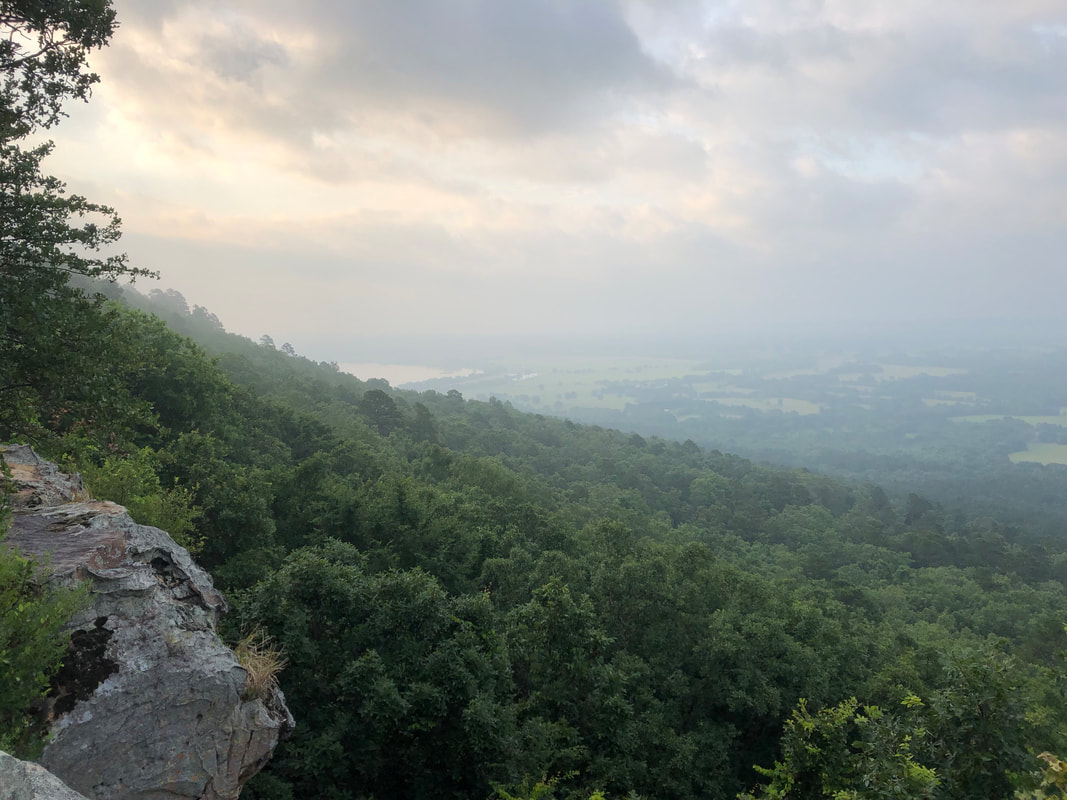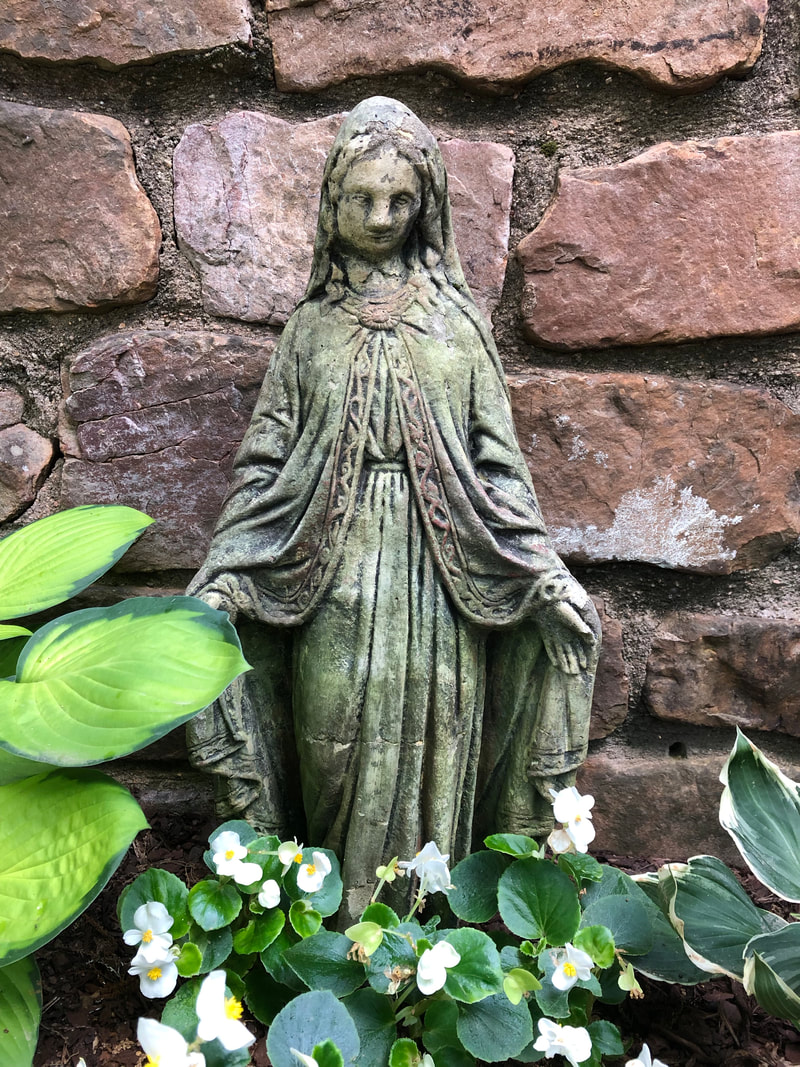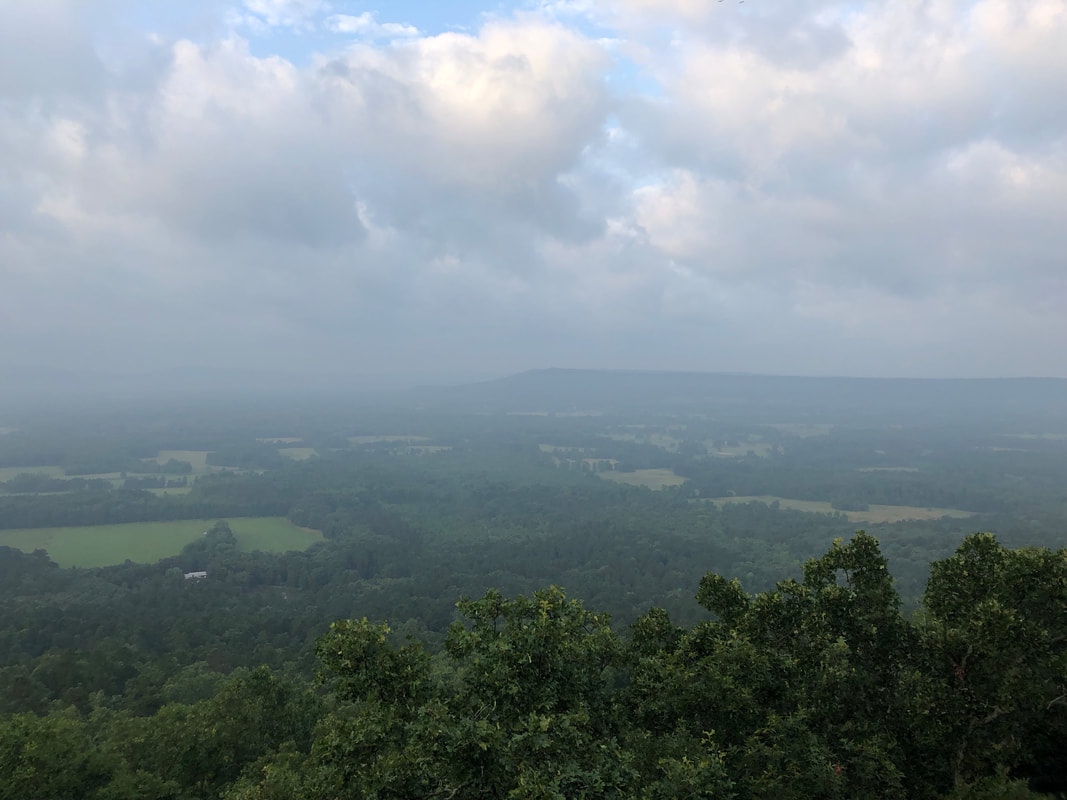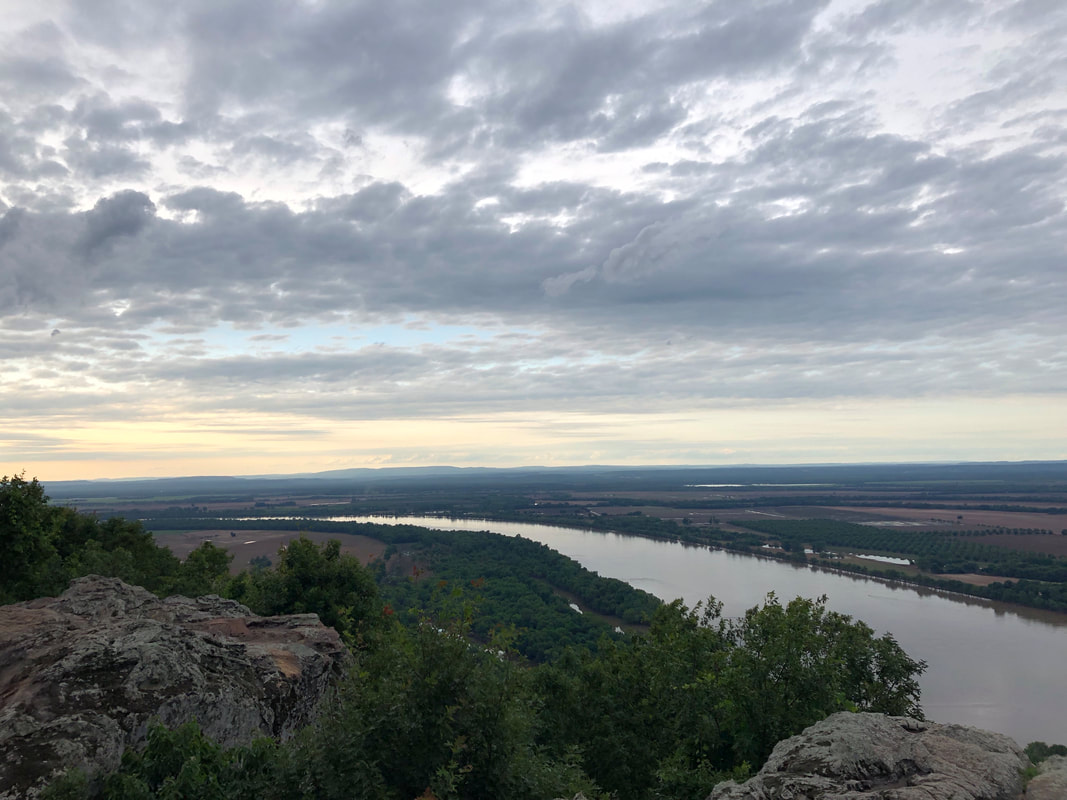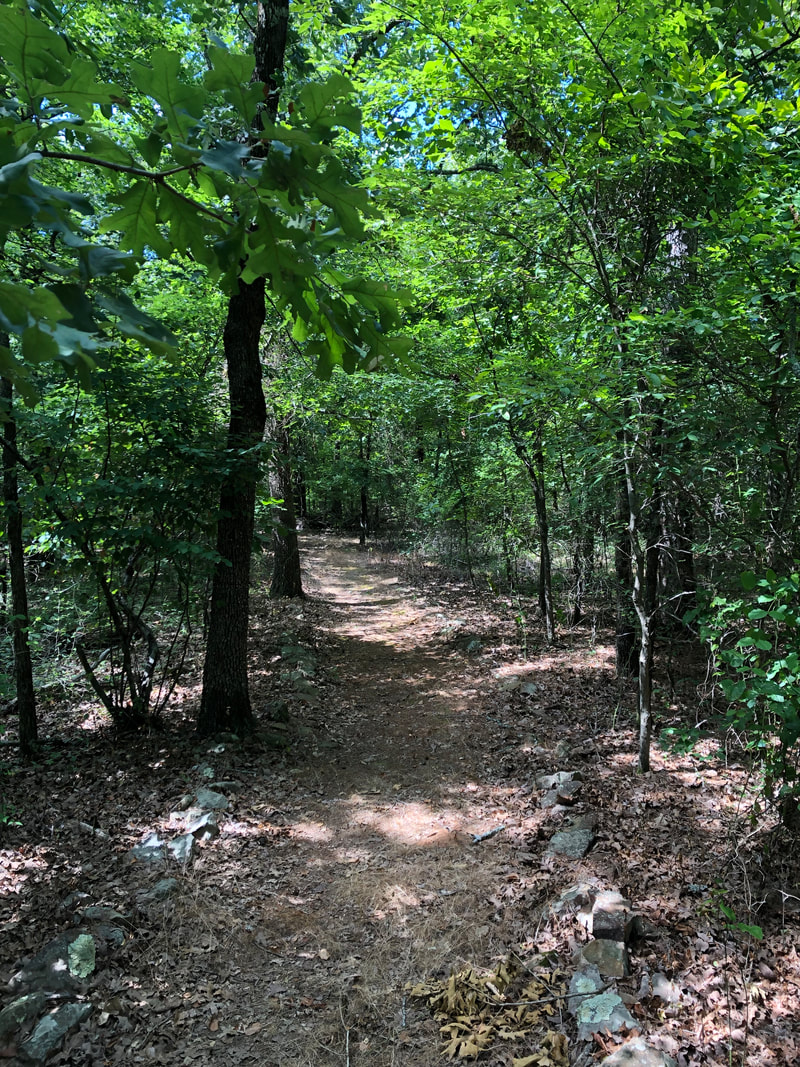|
"School trains people to work as maintainers. “The sculptures are all here in the gallery, make sure they are still here at the end of the shift… The floor is clean when you start, make sure it’s clean when you finish… The policy manual has seven rules in it, please don’t break them… The next ten patients are going to need allergy tests…” There are customers to be served, standards to be maintained, work to be done. Important work, no doubt, but not thrilling.
A few people somehow avoid these lessons and become instigators, impresarios and disruptors instead. They’re not only dancing with infinity but completely unsure what’s going to work, and yet they are hooked on leaping forward. I think it’s possible to switch from one posture to the other. I know that it’s incredibly difficult, though. And it’s hard to do both at the same time. Choose wisely." https://seths.blog/2019/11/maintainers/
0 Comments
Last week, I took a short personal journey that followed a familiar path only recently reclaimed by the mindful stewards of tradition at Camp Mitchell. It leads to an enchanted clearing in the woods, carpeted with lichen and moss, shaded by a canopy of tree leaves and pine needles. And there sits the stone altar. I’ve always felt closest to the gentle freedom of self-determination amongst the natural creation of wood and water, rocks and rivers, sand and sunshine; when my body is enveloped by its environment. These are holy places for me...
Decades have weathered the altar, now more rustic than ever, and I understand it will soon be refurbished for new generations. I’m pleased that my feet won’t be alone on that path, that this special place will continue to provide rest and respite for weary souls like mine. “Grant us grace fearlessly to contend against evil and to make no peace with oppression; and, that we may reverently use our freedom, help us to employ it in the maintenance of justice in our communities and among the nations...” Many of you may be wondering about all of the social media posts featuring pictures of mountains and trees, chapels and crosses. One of my dearest and most “tenured” friends invited me to help her direct the junior high session at Camp Mitchell this year, the very same session where we met 35 years ago. It sits atop Petit Jean Mountain in central Arkansas and is imbued with a spirit that moves beyond the lovely views and serenity of a state park. I’d call it the essence of real community, true inclusivity, genuine kindness and compassion. No matter your spiritual practice, you can’t help but be swept up in the singing, the laughter, the playfulness, the prayerfulness, and the readiness to make every joyful (loud) noise! And you can’t help but be transformed...
We used superheroes to illustrate the passage from Micah 6:8, “to act justly, to love mercy, and to walk humbly with your God.” And so we discussed justice, mercy, and humility, along with fear, power, and the responsible use of privilege. How beautiful to see the reception, the recognition on the kids’ faces when they embraced and employed those concepts! Admittedly, it was a lot of work... But honestly, I had as much fun as I did when I was a camper, perhaps a little more. And I got to spend a week on the mountain with incredible people, old friends and new. Although tired, I feel refreshed, renewed, and somehow lighter. I had a chance to feel into familiar traditions that comforted me, and new ideas that will propel me forward. Open eyes, open mind, open heart. Without thought or intention, I stripped down to my marrow, laid down years of painful events, adult navigation, and all of my coping/defense mechanisms. I uncovered and recovered parts of my self I had lost or forgotten. It feels good... Several years ago, my best friend from college built a spectacular cabin on Beaver Lake in Benton County, Arkansas, not far from where we went to school. When I say “built,” I mean designed and physically constructed it, albeit with help from family, friends, and a really good concrete company. Now that I live in Louisiana, her invitation to the Ozark Mountains was a welcomed respite from this summer's oppressive heat and humidity, so last month we loaded up the car and headed 10 hours north to what we all affectionately call the “treehouse.” Floor to ceiling glass windows frame a view of the lake totally obscured by lush green trees. Our six glorious days and five beautiful evenings spent swimming and skipping rocks were punctuated by several deer sightings and one terrific thunderstorm.
As we packed up to begin the trek south again, we decided to soften our re-entry with a stop at nearby Crystal Bridges Museum of American Art. The impressive buildings were designed to integrate into their lush green habitat, part of the museum’s mission “to welcome all to celebrate the American spirit in a setting that unites the power of art with the beauty of nature.” Arkansas is The Natural State, after all. One of Crystal Bridges’s jewels is the Bachman-Wilson House, a Frank Lloyd Wright design that was originally constructed in New Jersey in 1956. In 2015, the entire building was taken apart and each component was labeled, packed, and moved to the museum grounds where it was reconstructed. It’s fitting they would choose a Frank Lloyd Wright house. His concepts of art, nature, beauty, aesthetics, form, function, and all of their intersections are at once both timeless and revolutionary. “In organic architecture then, it is quite impossible to consider the building as one thing, its furnishings another and its setting and environment still another,” he concluded. “The spirit in which these buildings are conceived sees all these together at work as one thing.” To that end, Wright designed furniture, rugs, fabrics, art glass, lighting, dinnerware, and graphic arts… He believed that every man, woman and child had the right to live a beautiful life in beautiful circumstances and he sought to create an affordable architecture that served that aspiration. (franklloydwright.org) Coincidentally, I had been contemplating Wright for several weeks, since I began a study of living life artfully. I found a quote he used to clarify a theory popularized by his mentor, Louis Sullivan. “Form follows function — that has been misunderstood. Form and function should be one, joined in a spiritual union.” So how do we create that spiritual union in our own lives? How do we exercise our right to live a beautiful life in beautiful circumstances? How and when do we consciously make decisions to surround ourselves with those items, activities, people we find beautiful? When do we subconsciously deny ourselves those same indulgences? How can we deepen, enrich our tapestry by weaving in more color, more texture… more silk, more linen, more leather? If you are the artist, the artisan, how can you use your life, your letters, your legacies as your medium? I have always adhered to the notion of functional art: Occupying that tenuous space between fine art and the everyday, functional art refers to aesthetic objects that serve utilitarian purposes. The genre is remarkably inclusive: it encompasses everything from furniture and lighting to dishes and even books. (Alex Allenchey of Artspace) It’s the blue-green glazed pottery coffee mug I use to warm my hands every morning. It’s the hand-turned walnut candle stick my grandfather made when he was still alive and well enough to patiently putter around his wood shop. It’s the soft, worn leather backpack I scored from an old girlfriend twenty five years ago that still carries my journal and a fountain pen, now along with my iPad. It’s the stained glass my best friend made in college, long before she built a cabin on Beaver Lake. I’ll venture to say it’s also a careful curation of souls with all of their unique stories. I generally encounter these delightful little masterpieces when I least expect them. Truly, it’s one of my favorite parts of traveling, which for me, can mean getting lost in my own backyard; an unexpected conversation, a gracious invitation, a profound insight I would have never entertained if I had stayed inside my own insular bubble. Back to living a life as the ultimate expression of functional art. Back to the Ozarks. William Joseph (Joe) Nieters is freelance photographer in central Missouri, just a bit northeast of our vacation retreat. He offers this definition of art: Art is something we do, a verb. Art is an expression of our thoughts, emotions, intuitions, and desires, but it is even more personal than that: it’s about sharing the way we experience the world, which for many is an extension of personality. It is the communication of intimate concepts that cannot be faithfully portrayed by words alone. And because words alone are not enough, we must find some other vehicle to carry our intent. But the content that we instill on or in our chosen media is not in itself the art. Art is to be found in how the media is used, the way in which the content is expressed. Art is a verb. So is love in my dictionary. Both express our most intimate experiences, our profound and formative perceptions of the world as we understand it. Both require a level of self-awareness and a desire to engage that self with something outside of our own skin. Both mean making thoughtful decisions to see what is around us, what is available to us. Both demand we seek the beauty in our surroundings and find ways to communicate what we see, share what we’ve discovered. So each of us becomes an artist. Our life, then, becomes our body of work. Some pieces will be better than others. Some relationships, careers, decades will be better than others. But there is beauty in each of them, whether it’s a gritty depiction of harsh reality or an ethereal study of light and shadow. We learn, hone our craft, use new media, choose different tools. We feed our curiosity. We grow in our expression and develop our authenticity. This is how our voice emerges, that particular essence that characterizes our work. When we choose love over fear. When we choose clarity over obscurity. When we choose elegance over crudeness. When we cling to courage in the face of adversity. When we follow what feels good and right in our very core instead of generally accepted consensus. When we allow ourselves to play. When we permit ourselves to fail without shame or judgment so we can move on to success and fulfillment. The blue-green coffee mug breaks and is replaced with iridescent raku. The written memory of my grandfather’s thick and heavy hand becoming so nimble replaces the candle stick that was lost in a cross country move. Stained glass windows give way to buildings that offer refuge to weary spirits in need of a lake. But I’m never letting go of that backpack. One of the most useful tools development coaches employ is a personal manifesto. I’ve researched the methodology as a device for my clients who are searching for direction, clarity. The first step in the process is reflection, an assessment of values and priorities. I decided to revisit my handwritten journals that have sporadically chronicled the last thirty of my forty nine years, and discovered that I had unwittingly crafted my own manifesto about ten years ago. At least the beginning of one.
I was tired of reading other people’s truths, other people’s insights, that only partially addressed the questions I was asking. I have always been a seeker — of knowledge, of wisdom (two very different things), of beauty, of joy. Always thirsty, always hungry. By the time I reached forty, I was beginning to understand that while many rites of passage are universal, everyone’s experience is unique. Each individual’s environment, geography, situation, circumstance, cast of characters, all inform their perceptions — what and how they remember that experience. This is the art of living. The colors, textures, flavors, fragrances, melodies that become who we are; become what we carry with us; become, when taken as a whole, integral to our very identity. This is what enamors our friends, enchants our lovers, and emboldens our demons. I want to discuss the different elements of this piece over the next few weeks, but here it is in its entirety. As always, I welcome your thoughts and feedback. Dignity and respect. I picked it up from an old job and it stuck. Treating others, including other aspects of yourself, with dignity and respect sums up the Golden Rule: “Do unto others as you would have done unto you.” If you don’t treat yourself well, the premise makes no sense. If you do, you have the underpinnings of almost every religion. Perhaps a universal spirituality. Moreover, it applies to a natural law of behavior towards everything in our world. Spirit, soul, essence, yes. But also living creatures, resources, relationships, opportunities. The list is innumerable. Live in communion. Another phrase that stuck; “There is no other.” Understand that you are a part of of everything and everyone. See the invisible thread of connection. Share… who you are, what you have. Perceive your privilege and employ your empathy. Act mercifully and forgive graciously. Meet your fellow travelers always with benevolence. Know that you need air, water, and, at times, a little food. Everything else, everyone else, is a gift. Travel light. Cherish what is precious, let go of the rest. Learn how to distinguish. Keep it simple. Open your eyes to what is around you. Not only the beauty, but the less apparent beauty in strife, pain, chaos. A trial weathered or a wound healed produces incredible wisdom, sometimes encased in scar tissue. Open your mind to new ideas, new perceptions of old ideas. Open your heart so as to act in love, from love, not fear. Buy into creativity. Dig in the dirt and feel the visceral connection to earth, to the fundamental elements of life. Watch plants grow and bloom. Recognize it is the same energy that infuses a symphony, a painting, a ballet. All are physical manifestations of a holy creative source. Feel it, channel it, allow yourself to be an instrument. Surrender. Not in defeat, but in trust. When fearful, believe. Surrender to death so that you may live life fully. Breathe. Enjoy the peace that comes when a struggle has ended. Stop kicking, and be still. Listen to the quiet and hear the divine. Honor all that has gone before you. The shoulders on which you stand. Pay attention to the stories, learn the lessons. Carry them with you. But remember that people move, places shift. Lives begin and end, relationships begin and end, both forever altering in between. Change is constant and heartbreak is sure. While pain is inevitable, suffering is not. Grieve, but don’t stay there too long. Make way for resurrection, rebirth. By your choice or not, a new adventure awaits. And now we move on to Seth Godin. While I believe this guy is brilliant, I'm more influenced by his insight. As an individual who is beginning a blog, creating voice, developing acuity, I feel his perspective is invaluable. I'll be posting more of his stuff, but this is a great introduction... for both of us!
The paradox of the flawless record. If your work has never been criticized, it's unlikely you have any work. Creating work is the point, though, which means that in order to do something that matters, you're going to be criticized. If your goal is to be universally liked and respected and understood, then, it must mean your goal is to not do something that matters. Which requires hiding. Hiding, of course, isn't the point. Hence the paradox. You don't want to be criticized and you do want to matter. The solution: Create work that gets criticized. AND, have the discernment to tell the difference between useful criticism (rare and precious) and the stuff worth ignoring (everything else). I have a few gurus I follow when it comes to my personal philosophy on creativity, ingenuity, personal accountability, professional ethics, emotional intelligence... which as a body, for me, define leadership. I'll be discussing (and quoting) many of those folks in this blog, and I want to start with this guy, Dan Waldschmidt. I'm eager to read his book, Edgy Conversations.
This particular post from 2014 offers wisdom many people spend years cultivating. What I love so much about it is the underlying strategy of facing your fears on a daily basis, and winning that constant battle by a conviction in your own self worth. Here you go: You have to do the hard things. You have to make the call you’re afraid to make. You have to get up earlier than you want to get up. You have to give more than you get in return right away. You have to care more about others than they care about you. You have to fight when you are already injured, bloody, and sore. You have to feel unsure and insecure when playing it safe seems smarter. You have to lead when no one else is following you yet. You have to invest in yourself even though no one else is. You have to look like a fool while you’re looking for answers you don’t have. You have to grind out the details when it’s easier to shrug them off. You have to deliver results when making excuses is an option. You have to search for your own explanations even when you’re told to accept the “facts”. You have to make mistakes and look like an idiot. You have to try and fail and try again. You have to run faster even though you’re out of breath. You have to be kind to people who have been cruel to you. You have to meet deadlines that are unreasonable and deliver results that are unparalleled. You have to be accountable for your actions even when things go wrong. You have to keep moving towards where you want to be no matter what’s in front of you. You have to do the hard things. The things that no one else is doing. The things that scare you. The things that make you wonder how much longer you can hold on. Those are the things that define you. Those are the things that make the difference between living a life of mediocrity or outrageous success. The hard things are the easiest things to avoid. To excuse away. To pretend like they don't apply to you. The simple truth about how ordinary people accomplish outrageous feats of success is that they do the hard things that smarter, wealthier, more qualified people don’t have the courage — or desperation — to do. Do the hard things. You might be surprised at how amazing you really are. |
AuthorJulie Watson Melancon Archives
November 2019
Categories
All
|





